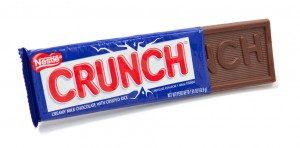 North Americans have recently acquired a taste for healthier food options that contain natural ingredients. Simple ingredients with little-to-no chemical additives have grown in demand and major food companies are either getting on board with this trend on their own, or being forced on board by food bloggers and health activists who publicly expose their products as potentially harmful. While many food chains have removed harmful chemicals from their products in European countries, Canada and the US seem to lag behind. If you plan on enrolling in a food safety college in North America, you might be interested in learning more about some of these FDA approved ingredients that are actually harmful, as well as where they might be hiding.
North Americans have recently acquired a taste for healthier food options that contain natural ingredients. Simple ingredients with little-to-no chemical additives have grown in demand and major food companies are either getting on board with this trend on their own, or being forced on board by food bloggers and health activists who publicly expose their products as potentially harmful. While many food chains have removed harmful chemicals from their products in European countries, Canada and the US seem to lag behind. If you plan on enrolling in a food safety college in North America, you might be interested in learning more about some of these FDA approved ingredients that are actually harmful, as well as where they might be hiding.
Nestle To Remove Artificial Ingredients
Several confectionary companies have recently decided to make changes to the ingredients lists of some of their products. A few of these companies include Hershey & Co., Mondelez International Inc. (the company that makes Oreo cookies and Cadbury chocolate) and Nestle. Among these giant snack manufacturers, Nestle has made the bold decision of removing artificial flavours and colours from a variety of its candy bars, including Crunch and Butterfinger. Nestle has stated that these changes will take effect by the end of this year.
Some of the artificial colours and flavours used in Nestle’s products include dyes like Red 40 and Yellow 5, and flavours like vanillin. Experts who have had clinical research training know that both Red 40 and Yellow 5 have been linked with hyperactivity and other behavioural disorders in children, and studies have shown that Yellow 5 has links to several other diseases and conditions as well.
Subway and the Yoga Mat Bread
Last year, prominent food blogger Vani Hari, called Subway out for using a chemical called azodicarbonamide (ADA) in its sandwich bread. At the time, many people were unaware of the typical uses for this chemical or why it was even present in the sandwich giant’s bread. Individuals who have had food safety training know that Subway was using ADA as a bleaching agent and dough conditioner, which allowed the company to produce softer and stretchier bread at a quicker and cheaper rate. What might shock many is that this particular chemical compound is also used to make yoga mats and flip-flops. Even more shocking, is the fact that it’s actually approved by the FDA for its use in many food products—in fact, fast-food chains like Burger King, McDonald’s and even Starbuck’s all actively use this chemical in their bread products too.
As a result of a public petition (and a lot of bad press) Subway has since agreed to phase out the compound from its bread, though none of its competitors have done the same. So, why was Subway the only chain that was so fiercely targeted? Because of its misleading slogan—“eat fresh”—which implies that its consumers will be provided with fresh, healthy fast food alternatives.
Kraft Makes Some Changes to Mac & Cheese Recipe
Back in 2013, Food Babe blogger Vani Hari began a campaign to get Kraft to remove the artificial yellow dyes from its infamous Mac & Cheese. The yellow dyes are responsible for creating the bright yellow-orange hue of the cheesy pasta, and individuals who have had food quality training know that consuming these dyes can be very harmful. Experts know that Yellow 5 has been linked to medical conditions including hyperactivity, asthma, skin conditions and cancer. While Kraft does not plan to remove the artificial dyes from its original Macaroni & Cheese recipe anytime soon, it did already make changes to its children’s character-shaped product line which was released in 2014. The versions of this line have six additional grams of whole grains, are lower in sodium and saturated fat and use spices for colouring instead of artificial dyes.
Have you heard of any other food companies removing harmful chemicals from their products recently?



